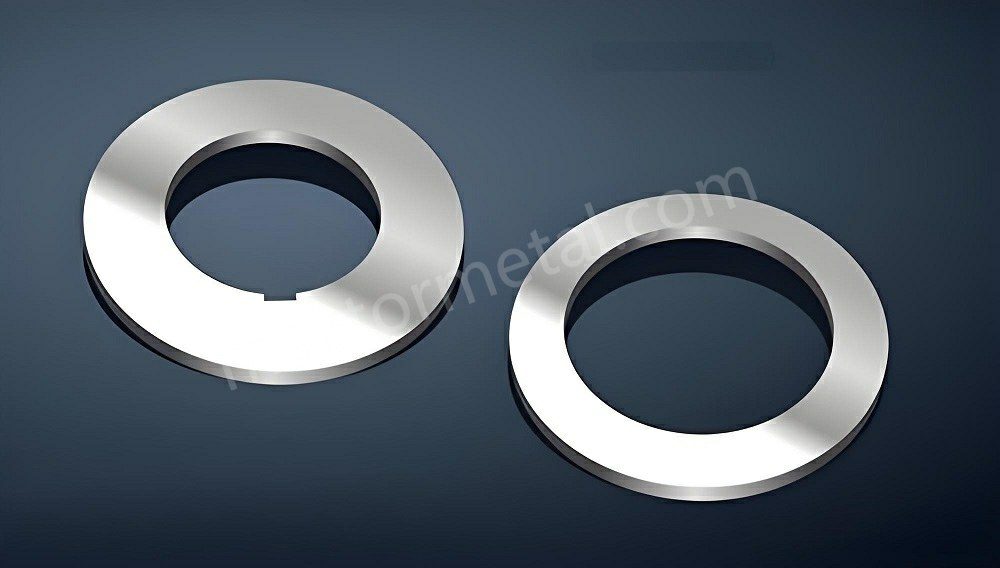
Metal slitting blades are essential tools used to cut metal coils into narrow and precise strips. These blades play a crucial role in enhancing manufacturing efficiency and quality. Industries such as car-making and packaging heavily rely on slitting machines, as they enable accurate metal cutting while minimizing material waste. This not only saves money but also increases productivity. Companies like Nanjing Metal specialize in creating custom blades tailored to various needs. To enhance your production capabilities, be sure to contact a trusted supplier for high-quality metal slitting blades.
Key Takeaways
- Metal slitting blades cut metal coils into exact strips. This helps factories work faster and waste less material.
- Picking the right blade material and edge shape makes cutting better. This improves product quality and saves money.
- Custom blades made for specific jobs can work faster and cut more accurately. They are a good choice for businesses.
- Taking care of blades by sharpening and cleaning them is important. This keeps cuts accurate and makes blades last longer.
- Industries like car-making, airplanes, and packaging use these blades. They help make products quickly, neatly, and efficiently.
What Are Metal Slitting Blades?
Definition of Metal Slitting Blades
Specialized Cutting Tools
Metal slitting blades are tools made to cut wide metal coils into smaller strips. These blades are important for the slitting process, which helps in modern manufacturing. Think of them as sharp tools that make clean cuts while keeping the material strong. Their tough design lets them cut different metals, from thin sheets to thick coils, easily.
Role in Slitting Machines
In a metal slitter, these blades work with other parts to cut metal precisely. They are placed on slitting equipment and spin fast to slice metal smoothly. This setup makes sure the slitting technology works well and meets exact precision tolerances. Without these blades, it would be hard to get good quality and efficiency in metal processing.
Key Functions of Metal Slitting Blades
Achieving Precision Cuts
Metal slitting blades are known for their precise cuts. When blades are perfectly aligned, they make clean cuts with fewer mistakes. This improves the quality of the product and reduces wasted material. If blades are not aligned, cuts can be uneven, causing more scrap. Using well-made blades helps keep tight tolerances and gives better results in manufacturing.
- Metal slitting is important for today’s manufacturing.
- It offers accuracy and speed.
- Slitting processes can be used in many industries.
Improving Manufacturing Efficiency
Metal slitting blades also make manufacturing faster. They help produce many narrow metal strips quickly. Good-quality blades last longer and need less fixing or replacing. Their strength keeps them working well for a long time, saving money. Reliable blades boost productivity and help businesses stay ahead.
Common Materials for Metal Slitting Blades
Common Metal Slitting Blade Materials and Their Uses
The material of metal slitting blades affects how well they work and last. Different materials are chosen based on hardness, sharpness, and wear resistance. Below is a table showing common materials and their uses:
| Material | Hardness | Applications |
|---|---|---|
| Tool Steel | Very hard and durable | Electronics, car-making |
| Tungsten Carbide | Extremely hard | Aerospace, defense industries |
| Ceramic | Very sharp and durable | Medical tools, electronics |
The blade’s edge radius also affects its life and cutting ability. Choosing the right edge radius can make blades last longer, cut better, and save money. Here’s another table showing how blade material, hardness, and edge radius are connected:
| Blade Material | Hardness (HRC) | Recommended Edge Radius | Best Applications |
|---|---|---|---|
| High-Speed Steel (HSS) | 60–64 HRC | 10–30µm | Paper, thin plastics |
| Tungsten Carbide | 85–90 HRC | 20–50µm | Metal slitting, thick rubber |
| Ceramic Blades | 90+ HRC | 5–15µm | High-precision applications |
Picking the right material and edge radius helps your metal slitter work better and gives the best results for your needs.
How Metal Slitting Blades Work
Overview of the Cutting Process
Metal slitting blades cut wide metal coils into thin strips. This process depends on key steps to ensure good results.
- Blade Maintenance: Sharp blades make clean cuts. Check them often to avoid problems and keep quality steady.
- Tension Control: Machines adjust pressure during cutting. This keeps strips even and prevents mistakes.
- Cutting Methods: Different materials need different cutting styles. Thick metals use shear cutting. Thin sheets work best with razor cutting. Soft materials often need crush cutting.
Each step helps make better products. Knowing these steps can improve cutting and reduce waste.
Importance of Blade Design
The way metal slitting blades are made affects how they work. Blade shape, material, and edge design all matter.
- Blade Shape: Round blades are great for long cuts. Straight blades are better for short, exact cuts. Special blades are made for unique jobs.
- Material Selection: Strong materials like high-speed steel and tungsten carbide last longer and stay sharp. Picking the right one improves performance.
- Edge Geometry: The blade’s edge size changes how it cuts. A small edge cuts sharper, while a big edge lasts longer.
Tip: Good blade design saves time and money. Fewer replacements and repairs mean better efficiency.
Focusing on blade design helps you cut more precisely and work faster.
Types of Metal Slitting Blades
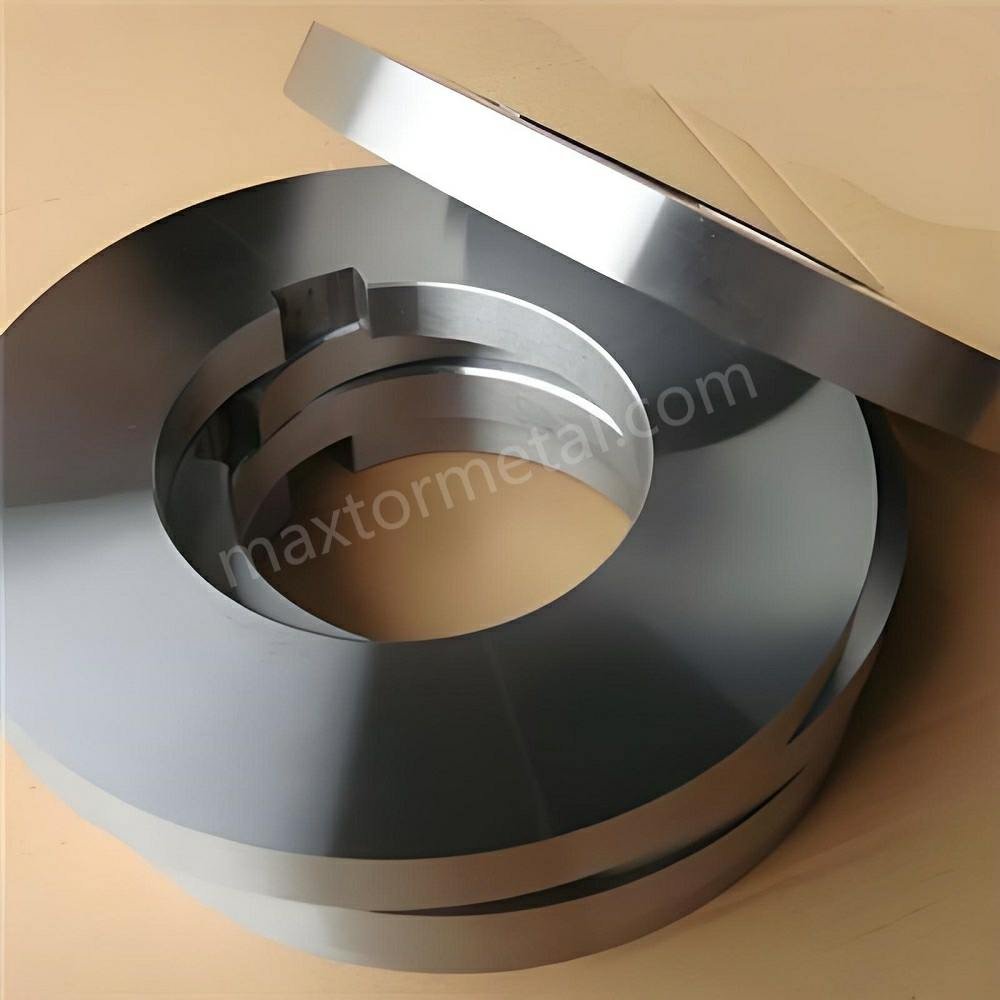
Circular Metal Slitting Blades
What Makes Circular Blades Special
Circular blades are the most popular type of cutting tools. They are round with sharp edges, perfect for nonstop cutting jobs. These blades spin quickly in machines, making smooth and exact cuts. They can cut materials like steel, aluminum, and copper with ease. Circular blades last a long time and stay sharp, improving their performance.
Where Circular Blades Are Used
Circular blades are used in industries needing fast and accurate cutting. They are common in machines that slice metal coils into thinner strips. These blades are key in cutting steel sheets to specific sizes. Industries like car-making, building, and packaging depend on them for speed and quality.
Straight Metal Slitting Blades
What Makes Straight Blades Different
Straight blades are flat and have a straight cutting edge. They are made for very precise and clean cuts. These blades are often crafted from strong steel to last longer and work well.
Industries That Use Straight Blades
Straight blades are used in jobs needing exact cuts of flat materials. They are found in making paper, plastic, and thin metal sheets. These blades also cut steel plates into specific sizes in factories. Their accuracy makes them important for manufacturing.
Specialty Metal Slitting Blades
Special Designs for Unique Jobs
Specialty blades are made for specific cutting tasks. They may have custom shapes, coatings, or materials for specific needs. Some are coated to last longer, while others are made for delicate materials. These designs help them perform well in tough jobs.
Why Specialty Blades Are Useful
Specialty blades save time by lasting longer and needing fewer fixes. They make cleaner cuts, giving better results every time. With these blades, you can handle tricky cutting tasks easily and accurately.
Coated Metal Slitting Blades
Types of Coatings Used
Coatings help metal slitting blades work better and last longer. Different coatings are made for specific jobs. Here are some common ones:
- TiN (Titanium Nitride): This coating makes blades harder and reduces friction. It helps blades cut faster and is great for high-speed tasks.
- DLC (Diamond-Like Carbon): This coating keeps blades cool and stops materials from sticking. It works well in tough cutting conditions.
- TiCN (Titanium Carbonitride): This coating makes blades stronger and more durable. It’s perfect for cutting hard materials in rough environments.
Tip: Pick the right coating for your blade. It can make cutting easier and help blades last longer. Match the coating to the material and job needs.
Advantages of Coated Blades
Coated blades have many benefits that improve manufacturing. They save time, cut costs, and boost productivity.
- Longer Blade Life: Coatings protect blades from damage, so they last longer. For example, a company using DLC-coated blades needed fewer replacements over 4 weeks.
- Better Cutting Efficiency: Coated blades slide smoothly, needing less force to cut. This saves energy and speeds up work.
- Sharper Cuts: Coatings keep blades sharp for a long time. This ensures clean and accurate cuts, even during heavy use.
- No Sticky Build-Up: Some coatings, like DLC, stop sticky materials from clinging to blades. This means less cleaning and no delays.
Note: Coated blades may cost more at first, but they save money over time. You’ll spend less on repairs and replacements.
Using coated blades is a smart choice for better cutting. The right coating can improve results and make work more efficient.

Industrial Applications of Metal Slitting Blades
Metal slitting blades are important tools in many industries. They help cut materials accurately and quickly, making them essential for manufacturing. Below are examples of how these blades are used in different fields.
Automotive Industry
Making Precise Car Parts
Car-making needs exact measurements for parts. Metal slitting blades cut steel sheets and other materials to the right size. This is important for making car panels, engine parts, and frames. Using a metal slitter reduces waste and improves efficiency. Manufacturers can create high-quality parts that meet strict standards.
Helping Build Cars Faster
Metal slitting speeds up car production. Wide steel coils are cut into smaller strips for assembly lines. These strips are used to make doors, frames, and other car parts. This process helps automakers finish cars on time while keeping quality high.
Aerospace Industry
Cutting Aircraft Materials
Planes need strong and light materials like aluminum and titanium. Metal slitting blades cut these materials precisely for wings and fuselages. Accurate cuts are important to avoid mistakes during assembly. A well-kept metal slitter ensures these cuts are perfect.
Making Lightweight Parts
Planes need to be light to save fuel. Metal slitting blades make thin strips that are strong but light. This helps improve airplane performance and safety. Advanced slitting methods meet the tough demands of aerospace manufacturing.
Packaging Industry
Creating Packaging Materials
Packaging companies use metal slitting blades to make aluminum foil and steel bands. These materials are used for food wrapping and industrial packaging. Slitting machines cut them to the exact sizes needed, making packaging more useful and affordable.
Custom Packaging Solutions
Custom packaging is growing popular, especially in online shopping. Metal slitting blades help make materials for specific needs, like steel bands for heavy shipments. Packaging makes up 30% of the industrial slitter blades market. By 2033, this market may grow to USD 2.5 billion.
Did You Know? The packaging industry is growing fast because of higher demand for better packaging solutions.
Electronics Industry
Making Circuit Boards
Circuit boards are in almost every electronic device. Metal slitting helps make them. A slitter cuts copper and aluminum sheets into thin strips. These strips create paths for electricity on the boards. Without precise cuts, the boards won’t work right.
The process needs to be very accurate. Even small mistakes can stop electricity from flowing. Using a well-kept slitter makes clean cuts and wastes less material. This saves money and makes better-quality boards.
Why Thin Metal Strips Matter
Thin metal strips are key for electronics today. They link parts on circuit boards and help devices run smoothly. Slitting machines cut these strips to exact sizes. This ensures they fit perfectly on the boards.
These strips are also strong and last a long time. Good slitting machines make strips that don’t wear out easily. This is important for devices used in tough conditions. Advanced slitting methods meet the need for reliable electronics.
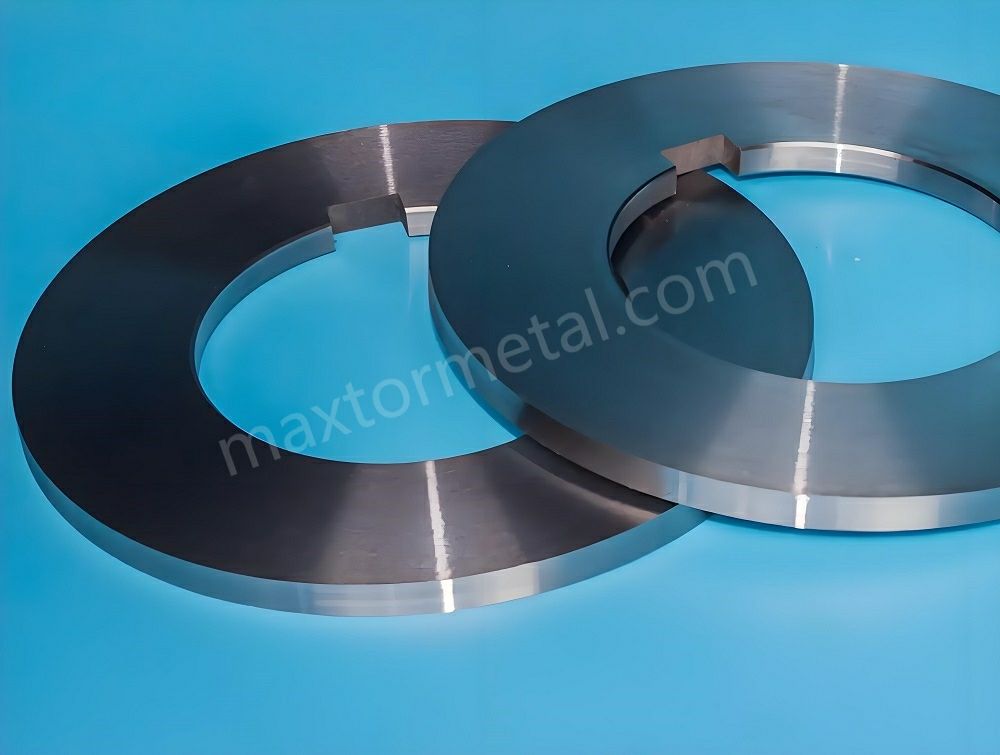
Construction Industry
Metal Parts for Buildings
Metal parts are the base of buildings and bridges. Metal slitting makes these parts with accuracy. Slitters cut steel and aluminum sheets into the right sizes. These sheets become beams, panels, and other building pieces.
Slitting helps make strong and safe structures. Accurate cuts ensure parts fit together well. This lowers the chance of problems and makes buildings safer.
Saving Materials and Time
Using materials wisely is important in construction. Metal slitting reduces waste by cutting sheets to exact sizes. This saves resources and cuts costs. A well-set slitter uses every piece of metal efficiently.
Slitting machines also work fast. They can cut large amounts of metal quickly. This speed keeps construction projects on track. By saving materials and time, slitting supports eco-friendly building.
Food Industry
Making Food Packaging
Food packaging needs to be safe and strong. Metal slitting helps make these materials. Slitters cut aluminum and steel sheets into thin strips. These strips are used for cans, foil, and other packaging.
This packaging keeps food fresh and safe. Precise slitting ensures the materials meet high standards. This helps protect food and makes it last longer.
Following Safety Rules
Safety is very important in food packaging. Slitting must follow strict rules to keep materials safe. Good slitters make clean cuts without harming the metal.
You can trust these materials to meet safety rules. Manufacturers use advanced slitting to avoid problems and keep things clean. This ensures food reaches people in perfect condition.
Benefits of Using Metal Slitting Blades in Manufacturing
Precision and Accuracy
Metal slitting blades make very precise cuts. They help ensure every cut meets exact measurements, which is important for making many products quickly. Their sharp edges and smart designs give consistent results. For example, computers can help plan cuts to use materials better, reducing waste and saving time. This accuracy improves product quality and lowers mistakes during production.
Strong blades also keep cutting well, even at high speeds. This helps make products that meet strict rules, whether cutting thin sheets or thick materials. Using these blades gives clean and exact cuts, making your manufacturing process more reliable.
Cost-Effectiveness
Metal slitting blades save money by lasting a long time. You won’t need to replace them often, which lowers costs. Smart systems can also monitor machines to reduce downtime and keep production running smoothly. This saves money and boosts profits.
These blades also help use materials wisely. Advanced cutting methods make sure every piece of material is used well. This reduces waste and supports eco-friendly manufacturing.
Better slitting processes also help manage inventory. You can track materials better and avoid having too much stock. These benefits make metal slitting blades a great choice for saving money in manufacturing.
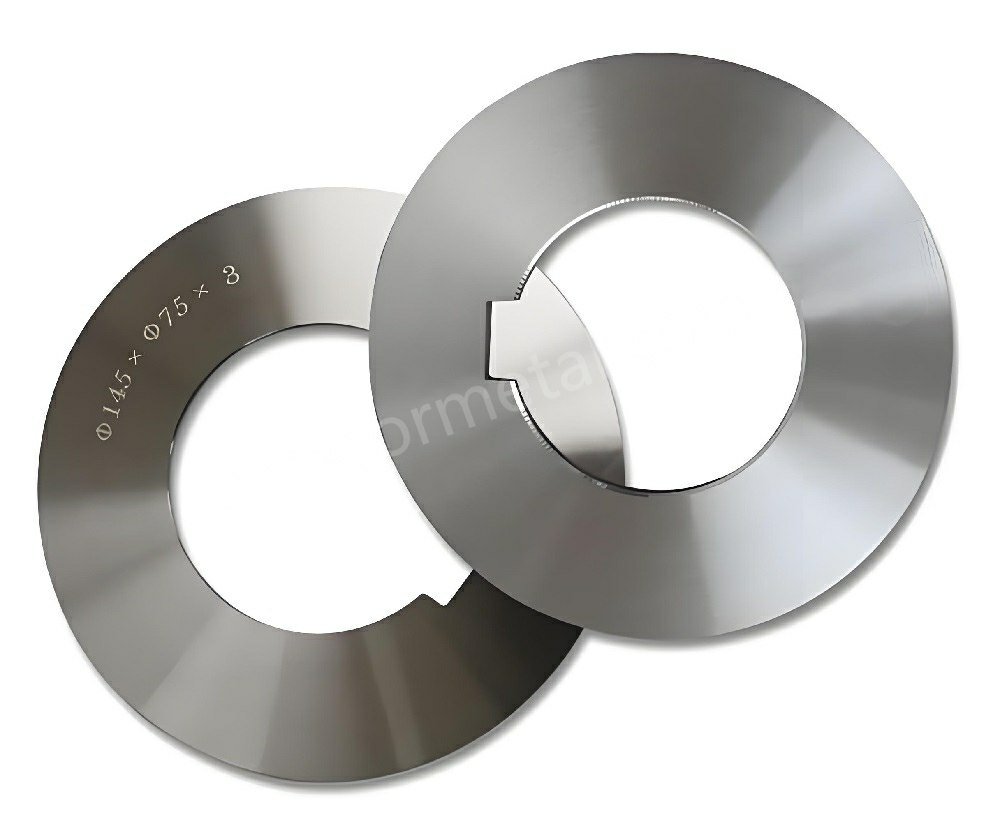
Versatility Across Materials
Metal slitting blades work with many types of materials. They can cut steel, aluminum, and copper easily. This makes them useful for different industries, like car-making and electronics.
These blades are great for fast production. You can switch between materials without losing quality or speed. For example, special blades can cut thin foils, while strong ones handle thick metals. This flexibility keeps your production efficient, no matter the material.
Using metal slitting blades lets you make high-quality products for many uses. Their ability to work with different materials makes them a key tool for modern manufacturing.
Enhanced Productivity and Reduced Waste
Metal slitting blades help make manufacturing faster and more efficient. They cut wide metal coils into thin strips quickly. This allows factories to handle large amounts of material in less time. Faster cutting helps meet deadlines and keeps production moving smoothly.
These blades also make very accurate cuts. Their sharp edges ensure each strip is the right size. This accuracy reduces mistakes and limits the need to fix errors. When cuts are precise, products are better, and less time is wasted fixing problems.
Another big benefit is less waste. Slitting blades use materials wisely by cutting sheets to exact sizes. This reduces leftover scraps and saves resources. For example, machines can adjust blade settings for different material thicknesses. This ensures clean cuts without wasting metal.
Strong blades last a long time and need fewer replacements. This means less downtime and fewer delays in production. Reliable blades keep work going and lower repair costs.
Tip: Take care of your blades! Sharpen and clean them often to keep them working well and cutting accurately.
Using metal slitting blades makes manufacturing faster, more accurate, and less wasteful. These tools save time, improve quality, and help you use materials better.
The Importance of Custom Metal Slitting Blades
Why Customization Matters
Every factory has different needs for cutting metal. Regular blades might not work for all jobs. Custom metal slitting blades fix this by being made to fit your machine. These blades are perfect for cutting thin aluminum or thick steel. They help make clean and exact cuts every time.
Custom blades also make work faster. A blade made for your job reduces delays and boosts production. You get smoother cuts, less waste, and save materials. Custom blades last longer because they are built for your specific tasks.
Benefits of Custom Blades for Different Jobs
Custom blades have many advantages for factories. First, they cut more accurately. A custom blade fits your machine well, giving better results. This is very important when cutting steel, where precision matters. Second, custom blades are stronger. They are made from tough materials like high-speed steel or tungsten carbide.
Another benefit is flexibility. Custom blades can cut many materials, from soft metals to hard ones. This makes them great for industries like car-making, aerospace, and packaging. Lastly, custom blades cost less to maintain. Their special design reduces wear, keeping your machine running longer.
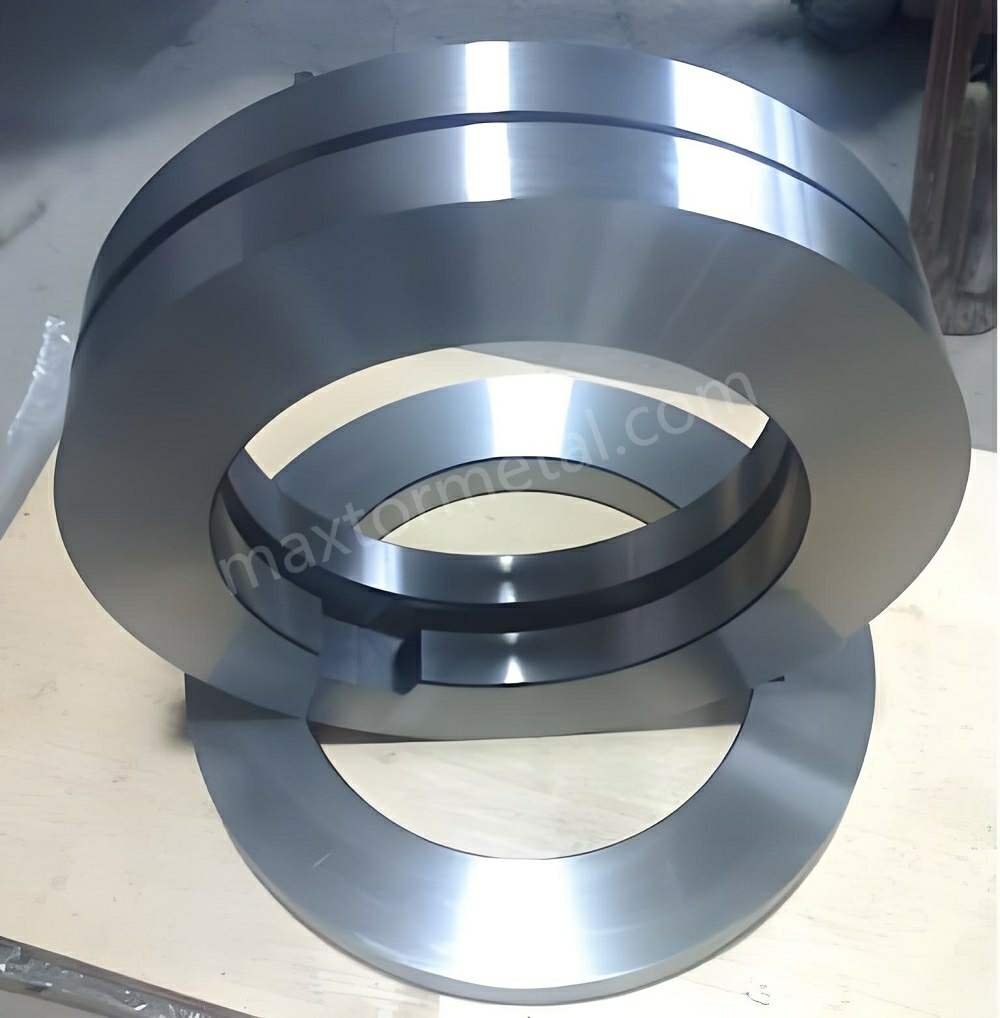
Nanjing Metal: Experts in Custom Metal Slitting Blades
Nanjing Metal is a trusted company for custom blades. With 18 years of experience, they are known for making high-quality industrial blades. Their skilled team creates blades for many different uses.
Nanjing Metal makes blades to fit your exact needs. Whether you need blades for cutting steel or other materials, they provide tools that improve your work. Their focus on quality has made them a leader in the industry.
To learn more about their custom blades, visit Nanjing Metal. If you want to improve your factory’s cutting process, contact their team today.
Metal slitting blades are important tools for manufacturing today. Their sharpness and strength make them useful in many industries. These include car-making, airplane building, and packaging. Custom blades designed for your needs work better and waste less material. They also help make products of higher quality. Companies like Nanjing Metal create strong, custom blades for different jobs. Working with experts can improve your factory and give better results.
FAQ
What should you think about when picking a metal slitting blade?
Look at the material, blade hardness, and edge shape. Choose a blade that fits your cutting job, like thin sheets or thick metals. Coatings can make blades last longer and cut smoother. Ask your supplier for help to pick the best one.
When should you change metal slitting blades?
Change blades if they get dull, make uneven cuts, or waste material. Keeping them sharp and checking them often can make them last longer. Watch how they work to avoid slowing down your production.
Can metal slitting blades cut different materials?
Yes, these blades can cut many materials like steel, aluminum, and copper. They can even handle softer stuff like plastic. Use the right blade for each material to get clean cuts and make the blade last longer.
How do coatings help blades work better?
Coatings make blades stronger, reduce friction, and stop sticky buildup. For example, titanium nitride (TiN) makes blades harder, and diamond-like carbon (DLC) keeps them cool. Pick a coating that matches your cutting job for better results and longer-lasting blades.
Why are custom metal slitting blades useful?
Custom blades are made to fit your machine and job needs. They cut more accurately, waste less material, and last longer. Special designs handle tricky materials and jobs better, saving time and money.
Tip: Always choose a trusted supplier for custom blades to ensure they work well with your machine.


